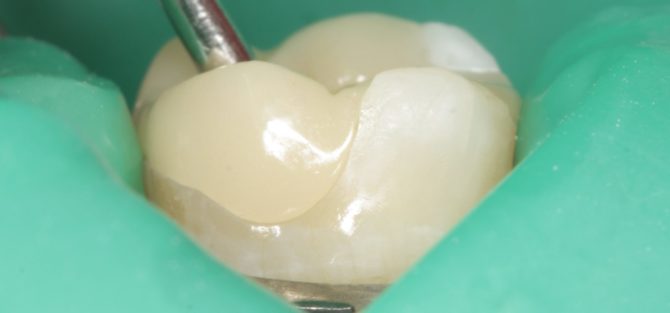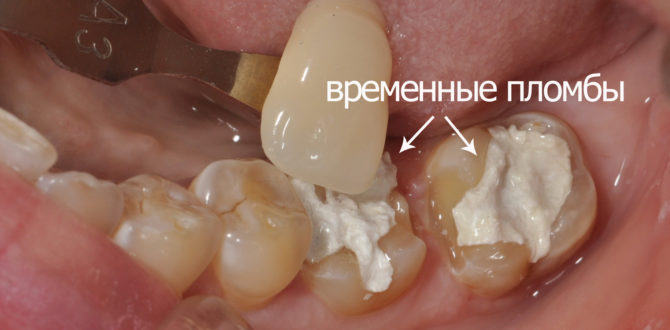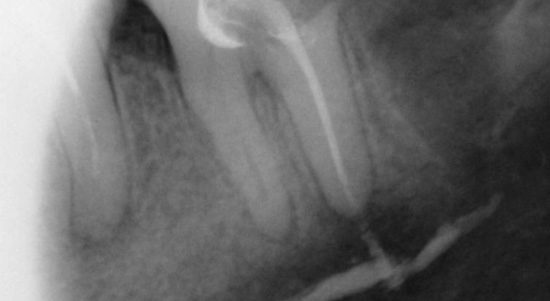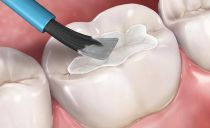A temporary filling on the tooth: why is it put, how much does it hold, how is it removed
At the final stage of caries treatment, the dentist seals the cavity in the tooth with filling material, which protects its internal part from harmful external influences, restores the shape and integrity of the tooth surface. But sometimes for example after removal of the nerve, patients are given a temporary filling - why not everyone knows why such manipulation is carried out, therefore this will be discussed in the article.
Content
Why put a temporary seal
Filling materials are used in dentistry to achieve different goals. Why put a temporary filling before and after brushing your canals:
- To decide on the removal or further treatment of the tooth.
- For a more thorough tooth cleaning.
- For the treatment procedure for carious destruction, pulpitis and inflammatory diseases of the roots of the tooth. After cleaning the canals, a medicine is often laid in the tooth cavity, which should be in it for several hours or days.
- In order to remove the nerve through the laying of arsenic paste.
- As an intermediate stage of treatment for the subsequent installation of a ceramic tab.
- As a temporary measure in the absence of the possibility of completing tooth treatment.
What is the difference between different filling formulations
Temporary filling material should be flexible for convenient laying in the tooth cavity and insoluble in water so that saliva does not damage it. At the moment, there are such special formulations for short-term fillings:
| Means | Features |
|---|---|
| Polycarboxylate cement | Biocompatible with body tissues, durable. It is used for fixing prostheses, filling milk and permanent teeth, filling channels. |
| Artificial dentin | After mixing with water, it hardens very quickly - in about 3 minutes. It is installed temporarily - for 1-3 days. The most widely used compound. |
| Dentin paste | It hardens in more than 10 hours. Set for a period of up to 10 days. |
| Kariosan | It is used to seal the channels. |
| Zinc-Eugenol Cement | It hardens in 8–12 hours in both dry and wet environments. Zinc-eugenol cement is installed to anesthetize and eliminate inflammatory phenomena. |
| Vinoxolum | Biocompatible product with increased strength. Vinoxol can be used for a long time and removed six months after filling. |
The listed filling materials differ from those used to install permanent fillings. The difference is due to their purpose and period of wearing - temporary fillings put exactly as much time as is required for treatment, so they should not have special strength and durability.
In various dentistry clinics, a temporary filling service can cost from 300 to 600 rubles.
How much a temporary filling in a tooth holds and how much it can be worn
Filling material can last in the tooth for about six months, after which it will lose its strength and cease to fulfill the necessary functions. A more important question is how much an established temporary seal can be worn so that it does not cause harm.
When filling, the dentist must voice the day on which you need to come to the reception again to extract the funds put into the tooth.Compositions containing arsenic become dangerous to the body in 1-2 weeks - this is why after this period it is extremely undesirable to walk with such a filling.
There are temporary fillings for prolonged use. For example, with a seal based on Vinoxol, you can walk for several months.
Regardless of why a temporary seal is placed, in order to keep it from falling out and breaking, the following rules must be observed:
- Eat only after a certain period after filling, which the dentist will indicate (it depends on the type of filling material).
- Do not eat sticky and very hard foods.
- Brush your teeth with a soft toothbrush.
- If it is necessary to preserve the filling material for a long time, it can be cleaned not with a brush, but with a cotton swab dipped in toothpaste.
Sometimes the filling material cracks, which is accompanied by the sudden appearance of an unpleasant aftertaste in the mouth (when using arsenic, the taste is metallic) and nausea. Such a symptom is an occasion to consult a doctor as soon as possible. In order to avoid intoxication of the body, it is forbidden to wear such a filling in a tooth and, moreover, keep arsenic under it.
How to remove a temporary seal
Materials for temporary fillings are not particularly durable, since such fillings should stand for a short period - while treatment takes place. Since they do not hold well, they are easy to remove with special tools.
After removal of the temporary filling, the dentist is taken for permanent installation. The tooth cavity is pre-treated with a disinfectant, dried. Patients with pulpitis require repeated brushing.
What to do if a temporary seal has fallen
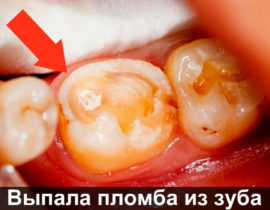 There are situations when the filling material falls out before the planned repeated visit to the dentist. In this case, the patient urgently needs to see a doctor, since open access to the inner chamber of the tooth will necessarily lead to an inflammatory process. During an unscheduled visit, the doctor will either replace the temporary filling material, or establish a permanent filling, completing the treatment of the tooth.
There are situations when the filling material falls out before the planned repeated visit to the dentist. In this case, the patient urgently needs to see a doctor, since open access to the inner chamber of the tooth will necessarily lead to an inflammatory process. During an unscheduled visit, the doctor will either replace the temporary filling material, or establish a permanent filling, completing the treatment of the tooth.
Before a visit to dentistry, you must not chew food on the side of the jaw with which the problem tooth is located. If food residues get inside the tooth, you can rinse them with plain water.
Toothache after temporary filling
When the nerve is removed with an arsenic paste placed in the tooth, the pain syndrome usually does not develop, since the drug used contains an anesthetic. However, in some patients, after a visit to the dentist and the installation of a temporary filling material, toothaches begin. The reason for this phenomenon may be:
- Exposure to a drug embedded in a tooth.
- Wearing the seal for too long - when it costs more than two weeks.
- Destruction of the filling material and penetration of the infection into the tooth.
- Loss of poorly supplied filling material.
- The presence of additional dental problems (cysts, periodontitis).
- The loss of filling material, which filled the root canals, beyond.
- Inaccurate actions by the dentist when cleaning the canals.
- Intolerance of filling material.
The process when the dentist puts a temporary filling is very important for the further preservation of the tooth. If mistakes are made when cleaning and filling the canals, laying the filling material, the patient may face tooth extraction or the development of a serious infectious process. Therefore, the choice of a dentist should be taken seriously, as well as oral hygiene. After all, how much a temporary seal can stand is highly dependent on compliance with the rules of conduct while wearing it.

